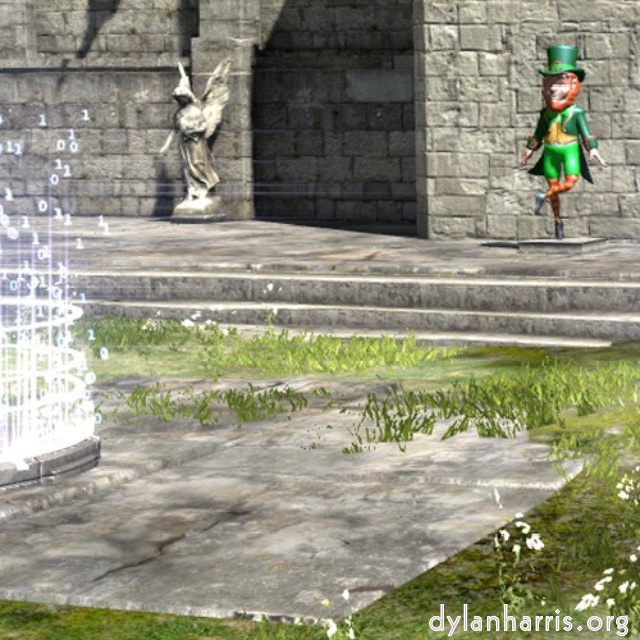the road to gehenna
The puzzles in the computer game The Road to Gehenna, the extension to The Talos Principle, are good, challenging, and more of the same. The McGuffin has changed slightly; you’re now playing a duplicated simulated robot rescuing other simulated robots in a virtual reality due to be deleted.
The puzzles is worth playing, beyond doubt. They’re a little more devious than Talos itself, sometimes depending on subtle behaviour of the puzzle devices introduced in the original.
Those simulated robots are trapped in the puzzles. One is released per puzzle solved. Whilst trapped, they have set themselves up as a community of victims. This community has a BBS. The BBS discussions are not so interesting per se, they feel staid, but they are relevant because they develop the robots’ characters. On the other hand, the BBS artworks, that explore the robots (mis)understanding of our world, are rather fun. I ignored all the meta– implications and enjoyed the stories, ascii artwork, & games, all within the game, for their own sake. It’s a pity that they’re irrelevant to the puzzle solving, so far as I could see.
I feel the two game concepts, the puzzles and the BBS, are too disconnected. Their only interaction is that, when you complete a puzzle, you see a little more of the BBS. I was disappointed in this lack of integration. The most glaring example is that the rescued robots all follow the same post–rescue dance, a dash stare dash: they do nothing to reflect the personalities developed in the BBS.

What really got me, indeed caught me by surprise, was the depressing nature of the game’s three endings. There are three choices: your character commits suicide, commits double suicide, or escapes at the expense of another robot’s life. Go back to the McGuffin: you’re a duplicate of a virtual robot, sent to rescue other virtual robots from a dying virtual world. You were sent to rescue them. If you allow any of them to die, you fail your mission. Escape is failure, and, given death is always failure, all endings lead to failure. There is no positive ending. Still, I suppose, since this game openly explores religious belief (Gehenna is Hell in English), that follows.
Which, oddly, leaves me to a completely different place. In one ending, the player character returns to whence s/he came. What happens between this copy and the original? The game stops before you get there. But I’ve explored that question myself. In my poem anticipating the metaverse, I touched upon the duplication of consciousness in simulated realities, and what might happen when the duplication ends. Others have touched upon these ideas too, more effectively that me: Iain M Banks comes to mind in Surface Detail, for example.
For a while I’ve had a poem waiting to be written, immersion, which would explore the remerging of identities when duplication ends (I don’t think this has ever been properly addressed in fiction). This is not where the game goes, but where I’m going, complements of the game and my failure to see my idea through (pneumonia gave it, time stole it).
My concept has this context: you, as a person, have taken part in a simulated reality. When simulated, you thought you were in the real. You started with no pre–simulation memories. You had a full life. You experienced much, you learnt many valuable things. You were a very different you. This simulated life has now come to an end. Your identity is to be reunited with your original self. But your fake life was real to you, as was its death.
Say it was a hunter–gatherer life, and you were killed by a predator (a bear). Had you survived, you would then have gained a deep aversion to bears, and places where your fear worries they might hide. Had you been a woman with a young child, you’d have intense concerns for that infant. I suggest this means that the freshly dead simulated ‘you’ will have very strong emotions that are, at best, useless to the real you, and probably directly harmful. They are best not merged into your real self. The remerge has to edit the simulated personality in some way to remove these complexes, at least. I wanted to explore edits that were too deep, so no emotion came across, & edits that were too shallow, so you gained, to follow the example, a deep fear of bear ambush whilst living in a ship that has no bears aboard. I don’t know where the balance, between learning too little and learning too much, might lie.
Still, that has nothing to do with The Road to Gehenna, except the game has the power to connect with this failure of mine.
In summary, it’s a good game, the puzzles are strong, but the elements are too disconnected, and the endings are stark. The latter can put me off an artform: a depressing ending to a novel will stop me reading for a while, the same for a game will stop me playing. Having said that, the fact that I spent money in the Steam store sales getting this game and others will prompt me to continue playing: I spent the money, I’ll make myself get my money’s worth with the other games. Mind you, the opposite to depressing endings, falsely happy endings, are far worse: if I wanted a life of fake happiness I’d take hallucinogenic drugs such as The Daily Mail and find joy in their insane cruelty.
Ignoring all that, this is not a bad game. I shall watch out for The Talos Principle 2.